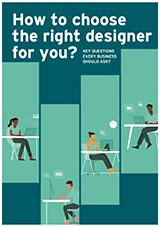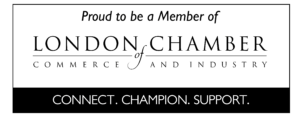HOW COLOUR BLIND ARE YOU?
How colour can drive our emotions and affect decision making?
Research* has shown that it takes only 90 seconds for people to make a subconscious judgment between products or companies – and between 62% and 90% of that assessment is based on colour alone.
Colour psychology studies the influence of colour on human mood and behaviour and is a rich stream of knowledge for anyone involved in design, marketing or communication.
Our minds respond to colours at a very primitive level but we rarely even notice or acknowledge the influence colour has on our decisions.
The very moment our eyes perceive colour, the brain sends signals to the endocrine system releasing hormones responsible for shifts in our mood and emotions. Colour can affect us both physiologically and psychologically – red can increase our heart rates and our breathing, yellow can make us feel happier, greens can promote feelings of calm and relaxation.
A properly selected colour helps put users in the right frame of mind to receive the message we want to deliver or compels people to take action.
Even a basic knowledge of colour psychology can be a very effective way to improve audience conversion and engagement rates.
How does it all work?
Psychologists refer to the MacLean Triune brain model – which says humans have three brain states, the primal (or reptilian) brain, the emotional (or limbic) brain, and the rational (or Neocortex) brain.
The primal brain controls basic functions like breathing, feeling hot or cold, and the ‘fight-or-flight’ reflex. The rational brain is responsible for our higher functions of language, learning and problem-solving.
This leaves the emotional brain which as the name suggests is where our emotional responses are seated. Many aspects of colour psychology are common to us all. Yellow is the colour of sunshine, of warmth. Yellow makes us feel happier.
Other aspects of colour response are possibly also affected by cultural and societal reinforcement but even these work at such an instant and deep level that we rarely ever stop to consider the way we are reacting to colours.
So, what do the various colours represent?
There are lots of variations in hue or tone within each segment of the colour wheel but here are some broad-brush strokes that may help you evaluate your own communications materials and brand identity. The emotional impact of colour on how we understand and engage with a brand can not be ignored. What do the different colours convey?
Red
A visceral, passionate colour; it can increase our heart rate and breathing and can even increase the activity/output of the pituitary gland. Red is energetic, passionate, provocative, exciting, powerful, attention-grabbing, bold, ambitious, pioneering. But it can also indicate aggression, anger and danger.
Often used for: Transport, technology and food (some tests show it can actively make people feel hungrier. Ever wondered why so many fast-food places feature red in their logo, literature and even decor?
Example brands: Coca-Cola, Bass, Bugatti, Netflix, CNN, Exxon, Virgin, Texaco, KFC, Heinz, Target, Kellogg’s, Nintendo, Red Bull, Lego, Levis, NASA, Adobe, 3M, Airbnb, Disney, PUMA, Fender, Toyota, Ducati, Ray-Ban
Yellow
Yellow is the colour of joy, happiness, creativity, energy, clarity, positivity, optimism, motivation, light, and warmth.
Often used for: Food and drink, childcare, health, design.
Example brands: McDonald’s, DHL, Schweppes, Subway, IKEA, Best Buy, Shell, Hertz, Nikon, Cheerios, Snapchat, Reese’s, Post-it, Cat, Yellow Pages, Pringles, DeWalt, Renault
Orange
Orange, as you’d expect, combines the dual aspects of red and yellow. It again represents sunshine and warmth, promotes happiness and is effective in catching customers’ attention. Also viewed as friendly, cheerful, warm, playful, optimistic, extrovert, impulsive, exuberant, confident, spontaneous and energetic with associations with vitality and freedom.
Often used for: Technology, food, health.
Example brands: Fanta, Gulf, Nickelodeon, Home Depot, Harley Davidson, JBL, TNT, Payless, Amazon, Ubuntu, EasyJet and the now-defunct Orange (obviously!)
Green
In its lighter shades, green is synonymous with calm, peace, serenity and freshness. The mid-tones bring ideas of ecology, fertility, growth and health, whilst deeper hues represent wealth, affluence, prestige, quality and security. Also associated with balance, growth, restoration, sanctuary, prosperity, with concepts of nature, generosity and stability.
Often used for: Recycling and ecology, food and drink, energy, health, technology, household (often cleaning products) and finance.
Example brands: Whole Foods, Land-Rover, Android, Sony Ericsson, Tropicana, Spotify, Starbucks, BP, Holiday Inn, Carlsberg, Hulu, John Deere, Tic-tac, John Lewis, Subway, Jolly Green Giant, Lacoste, Heineken, 7-UP
Blue
The most popular brand colour choice by some margin. In different hues, it embraces concepts of openness and freshness (rooted in ideas of the sea and sky) through to dependable strength and security.Trust, calm, loyalty, openness, dependability, security, stability, responsibility, loyalty, purpose, ambition and determination are all linked to the colour blue.
Often used for: Technology, finance, airlines, health, food.
Example brands: General Electric, AIG, Facebook, Twitter, Skype, Intel, Dell, Hewlett-Packard, IBM, PayPal, LinkedIn, WordPress, Sears, JP Morgan, Nokia, Adidas, Oreo, Ford, Walmart, Oral-B, Vimeo, Pfizer, American Express, VW, Flickr, Bell, Siemens, Dropbox, Gap, Nivea, Samsung, Philips, Unilever, Blu-ray
Purple
Not an overly popular brand colour historically, despite the richness of the deeper hues alluding to ideas of elegance and quality, sophistication and regality. It is also a mysterious and spiritual colour.
Purple evokes luxury, creativity, imagination, mystery, spirituality, nostalgia, unconventionality, originality, wealth, distinction, wisdom.
Example brands: Hallmark, Cadbury’s, Taco-Bell, Syfy, Yahoo!, Bing, The Scouts, Relyon, PremierLeague, National Trust, Game, Zoopla, The Rand Corporation, E4
Pink
One is of the least-used colours in branding. Pink is often associated in western culture with femininity, love, care, sensitivity and nurture. It is sometimes chosen for these connections but is also used to position a brand or product as being unconventional.
Brands that do use it include: BBC Three, Barbie, Cosmopolitan, Victoria’s Secret, T-Mobile, Dunkin’ Donuts, Baskin-Robbins, Johnson & Johnson, LG, Playboy, Playgirl, Lyft
Brown
Brown is the colour of the earth and is seen as carrying ideals of nature, simplicity, strength and durability – but also has associations with dirtiness and dung which mean it has to be used carefully. Natural, uncomplicated, honest, organic, comfortable and durable brown is often used for clothing or food and drink brands (coffee, tea, chocolate and alcohol).
Example brands: UPS, Louis Vuitton, Hollister, Nespresso, Hershey’s, M&M’s, Aero, Godiva Chocolatier, JP Morgan, UGG boots
Black (& Grey)
Black is probably the ultimate colour associated with classic sophistication, with connotations of stability, strength and durability. It is often the colour of choice for brands that have a more exclusive and ‘reassuringly expensive’ persona. Reliable, sophisticated, prestigious, valuable, timeless, powerful, formal, dominant, mature, experienced, knowledgable, serious, elegant – with connotations of authority and neutrality in the grey tones.
Often used for: Fashion, technology, cars
Example brands: Chanel, Dior, D&G, Playboy, The New York Times, Calvin Klein, Prada, Michael Kors, Bulgari, Gucci, Puma, Nike, Sony, Jack Daniels, Harley Davidson, World Wildlife Fund, BBC, AOL, Yves Saint Laurent, Vans, Audi, Wikipedia, Nissan, Apple, Lindt, Veritas, Microsoft, Norton Motorbikes
White
White has obvious associations with cold, purity and also simple sophistication. White is seen as simple, pure, noble, calm, clean, balanced and soft. White is hard to use as a brand colour in communications and generally has to be combined with a secondary colour which can often overpower the benefits of its signified meaning.
If the meanings linked to white are required it is often, therefore, combined with black.
Multi-Coloured & Rainbow coloured
Many companies use more than one colour in their primary logo and build greater meaning into their brand positioning in that way.
Using several colours, or even a rainbow of colours, is most often an attempt to convey ideas of being all-embracing or multi-faceted.
This is a relatively new development (in brand terms) which probably owes a great deal to the improved technology and reduced costs associated with professional full-colour printing. Although much of our modern communications are delivered digitally and the cost of a full-colour logo is no longer a restrictive factor, it is still not commonly advised as a defined brand; messaging and placement can be very hard to create and customers can be ‘confused’ by the lack of clarity.
For years brand designers have used a three-colour theory – more than three is generally seen as too many!
Example of colourful brand icons are: eBay, Google, NBC, Windows, Instagram, Altia, Fruit of the Loom, Channel 4, itv, PlayStation, MSN, The Olympic rings, Chrome, Skittles, Crayola, Wacom, Konica, Polaroid, LGBT rights
Conclusions
Any business hoping to attract and retain customers has to take its use of colour seriously. No one can afford to be colour-blind.
If it takes just 90 seconds for people to make a subconscious decision and up to 90% of that decision is rooted in our reaction to colour, then ignoring it will simply make you and your business red in the face. Then as you realise the error of your ways you’ll probably go pale before turning green!Invest a little thought into colour theory and colour psychology – you’ll be glad you did
* The Research cited here was by Colorcom, but many similar studies have been conducted into the influence of colour on human behaviour, mood and decisions.





